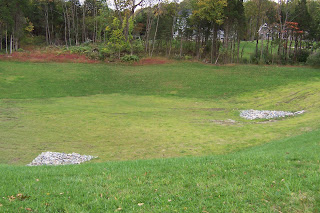Gardeners Are Returning to Local Nurseries
A significant number of gardeners are returning to their local garden centers to purchase their plants after having deserted them in favor of the mass merchandise home stores, according to the Garden Writers of America early spring survey completed in March. Apparently the honeymoon is over. Garden centers’ and local retail stores’ market share rebounded from a low of 39% in 2006 to a predicted 54% in 2010. The statistics for home stores are a mirror image, dropping to 37% in 2010 from a high of 52% in 2006.
Unfortunately the temporary desertion, coupled with the national economic meltdown, was just too much for some of the best growers and retailers with the most intriguing selection of plants. To add insult to injury, last year many consumer gardens were infected by late blight, spread far and wide by a wholesaler who knowingly shipped affected tomato plants to the big box stores.
There is enough material here for decades of discussion on economic and market theories, survival of the fittest, etc., but it is we the gardeners who are the losers in the battle. When specialty growers bite the dust, the single remaining source of a particular plant can disappear overnight. I enjoy the new introductions as much as anyone and I appreciate the efforts that commercial growers make to increase color selection, disease resistance, etc. But I also enjoy being able to find the old-fashioned favorites from my childhood, as well as native plants.
Our local garden center is in a state of transition and, in the interim, I ran over to one of the home stores to try to find some white pansies. While I loitered in the garden area waiting for Dan to emerge from the hardware section, I did a little experiment. I stood around among the plants, not doing anything in particular. I soon had shoppers asking me for gardening advice, hardiness information, and the location of various plants.
Answers to your gardening questions are what you get at a local garden center that you don’t get in the big box store. Frankly, I think that’s worth a few pennies more.
Unfortunately the temporary desertion, coupled with the national economic meltdown, was just too much for some of the best growers and retailers with the most intriguing selection of plants. To add insult to injury, last year many consumer gardens were infected by late blight, spread far and wide by a wholesaler who knowingly shipped affected tomato plants to the big box stores.
There is enough material here for decades of discussion on economic and market theories, survival of the fittest, etc., but it is we the gardeners who are the losers in the battle. When specialty growers bite the dust, the single remaining source of a particular plant can disappear overnight. I enjoy the new introductions as much as anyone and I appreciate the efforts that commercial growers make to increase color selection, disease resistance, etc. But I also enjoy being able to find the old-fashioned favorites from my childhood, as well as native plants.
Our local garden center is in a state of transition and, in the interim, I ran over to one of the home stores to try to find some white pansies. While I loitered in the garden area waiting for Dan to emerge from the hardware section, I did a little experiment. I stood around among the plants, not doing anything in particular. I soon had shoppers asking me for gardening advice, hardiness information, and the location of various plants.
Answers to your gardening questions are what you get at a local garden center that you don’t get in the big box store. Frankly, I think that’s worth a few pennies more.


